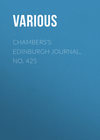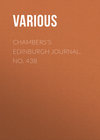Kitabı oku: «Harper's New Monthly Magazine, Vol III, No 13, 1851», sayfa 27
Fashions for Early Summer
The early days of June often exhibit the coyness of her sister, May; and while the leaves are broadly expanding, and the buds are every where bursting into blossom, in full exuberance, cool breezes from the North, or chilling vapors from the East, sometimes remind those who are riding or walking, of the breath of Winter. It is not safe permanently to employ the thin dress fabrics of flowing summer before the middle of the month. Silks form the most suitable material for out-of-door costume, and mantelets are more in vogue than the gossamer-like shawls of July.
Mantelets. – Those composed of glacé silks are greatly in favor, being of moderate size, loose, and rather short; they have, nevertheless, a novel appearance, the variety in their style depending greatly upon their trimmings. The waist and shoulders are gracefully marked. The principal trimmings consist of frillings, or flounces, cut falbalas and passamenteries arachneés. These decorations are intended principally for morning or demi-toilets, those of a more full-dress description being trimmed with a very deep fall of black lace, or two or three frillings equally deep and ample.
Dresses. – Plain bodies, slightly stiffened, are much in fashion. Those intended for pelisses are of the waistcoat form, cut in the Amazonian shape, somewhat like that seen in of our first illustration. Among other elegant styles, is a robe à la myon of gray taffeta, having the corsage formed of narrow plaits, in style resembling that in of the above illustration. It forms a kind of fan back; in front, the folds are made deep upon the top, and descend in a straight line toward the lower part of the waist.
In our first illustration represents an elegant style of Visiting Dress. It is of light blue silk; the skirt trimmed with three rather narrow flounces, waved at the edge, and caught up in a point up the centre of the front, where they are each confined with a small nœud of ribbon, the same color of the dress. The high, close-fitting corsage is entirely formed of narrow folds placed close together; the opening up the front being concealed by a fluting of ribbon, gradually narrowing toward the lower part of the waist. Long plain sleeves, ornamented round the top with a puffing of silk, forming an epaulette. The sleeves are open up the front of the arm as far as the bend, and caught across at regular intervals, so as to admit of the under full white sleeves showing through and forming puffings. Bonnet of white silk or satin: the exterior decorated with two white ostrich feathers, and the interior with a wreath of white rose-buds.
In our first picture, represents a beautiful Carriage Costume. Plain high dress of violet silk; the body fitting tight has a small jacket trimmed round with a narrow rûche. The body opens in the front and has a fulling of white lace to give the appearance of the frill of the habit shirt. The sleeves are not very wide, and are three-quarters length. They have cuffs cut in points, turned back, and edges with a narrow rûche. The skirt is long and fall, trimmed with rosettes of ribbon, from which hang two small tassels. Mantilla of rich silk, trimmed with broad black lace, lined with white silk. Bonnet of paille de riz, decorated with splendid drooping flowers on the right, of a primrose color.
Represents an Evening Costume. Dress of pink crèpe: the corsage low; the waist pointed, and of a moderate length. The cape pointed in the front, falls deep on the shoulders, entirely covering the plain short sleeves. The cape and the front of the skirt, are trimmed with white tûlle and roses. The skirt is long and full, the trimming, en tabliére, corresponds with the cape. Jupe of rich white silk is worn underneath. Shoes of pink satin.
Shows a neat style of head-dress for a Morning Costume, which is composed of folds of ribbon, partly covering a braid of hair on one side. The dress is high, edged with a lace collar, with a ribbon hanging in loops in front. The sleeves in morning costumes are generally very wide from the elbow, three-quarters length, and trimmed to correspond. The skirt is long and full, bias on each side, the front breadth turned back; trimmed with guimpe.
Bonnets are generally of white silk, formed in various designs, decorated with different sorts of violets and lilacs of the most opposite shades. They are very gay, yet very simple. They are generally somewhat small, having the front rather open at the sides, allowing the hair to be arranged in full bands, with becoming and fanciful ears in the interior. Represents a bonnet of white satin, covered with two rows of white lace, divided with a double row of fancy light green ribbon, and decorated with white daisies in the interior. Bonnets composed of crèpe and paille, are decorated with bunches of flowers composed of the wild violet, with grass and delicate herbs. A very elegant style of bonnet is composed partly of blonde and fillings of light green velours épinglé, ornamented in a fanciful manner with marabouts.
Caps are extremely pretty and light in appearance. Some formed of inlet, relieved with drawings, through which is passed a narrow satin ribbon, and decorated with coques, placed sidewise, are very pretty. A very charming style of morning caps are those formed of muslin, surmounted with four small torsades of lilac silk drooping over the forehead, and encircling the ears. Upon each side is placed a very large nœud of silk, and at the back two rachons of embroidered muslin, headed with torsades of ribbon. Another style forms upon the summit of the head, advancing a little in front, "à la Marie Stuart," having three papillons of Brussels point lace, divided with pink ribbons. On the sides tufts of lace, and black and pink ribbons in corkscrews, hanging low.










